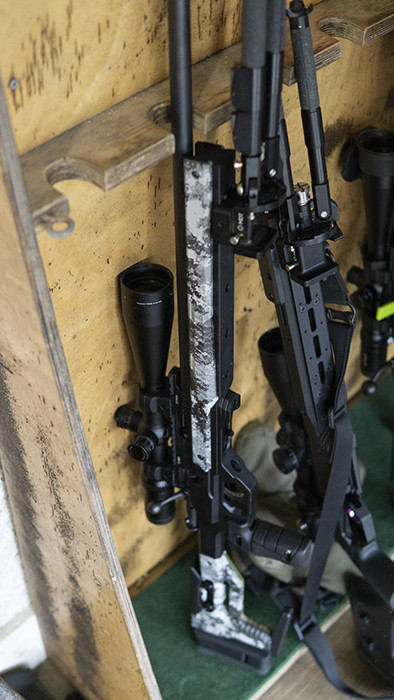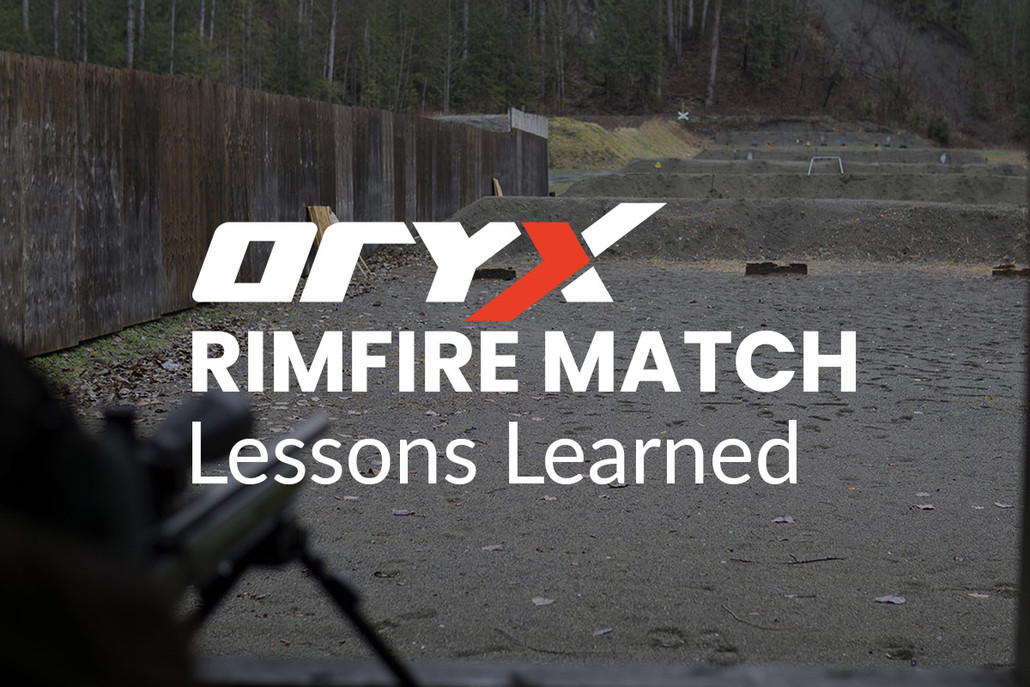Posted by Oryx on 2022 Apr 29th
Entering my First Rimfire Match

When I started working for MDT Sporting Goods, I only shot firearms while preparing and training for a hunt. This year I approached the shooting aspects of my hunt preparation a little differently by signing up for an NRL 22 Rimfire match at my local range. NRL 22 is a National Rifle League division specific to rimfire and has matches all over the United States and Canada. NRL 22 matches are fun, inexpensive to shoot, and very easy to participate in. Let's look at my preparation, rifle build, and lessons from this unique match.
My Budget Rimfire Rifle
For a rifle, I dropped my $200 heavy-barrel Savage Mk2 in an Oryx Sportsman chassis system, and I installed a 20 MOA scope base on both my rimfire rifle and my primary hunting rifle. This would allow me to quickly swap my Vortex HST between the two depending on the season and my needs. I attached both an ARCA rail and bipod under the chassis forend for stability.
The Oryx chassis is a great platform for the Savage Mk2. It was heavier and more stable than the factory wood stock, and the adjustable comb allowed me to get a perfect cheek weld and sight picture. The addition of the ARCA rail accessory let me mount and remove my ARCA bipod easily when switching between stages. Before the match, I downloaded the Applied Ballistics application for my phone and chronographed my ammo. I didn't have any shooting bags but was able to borrow some from people at the competition.
Shooting the Stages
The match I competed in had stages that required ten rounds and consisted of 2-3 targets at different distances. Each stage required a unique shooting position like kneeling, standing, and supported on various objects. They were timed (2 minutes), so all shots had to be completed before time ran out. When you sign up, you put yourself in a squad, like golfing in a group or playing with your friends during online gaming. These matches are great if you want to shoot with a group of people you know.
Each group was assigned a starting stage, and everyone took a turn before moving on to the next stage. We shot a total of 10 stages. While shooting, the atmosphere at the range was pretty relaxed and more fun than serious, but people were still focused on winning.
The format of a match is easy to follow. Each stage had 2-5 targets placed at distances from 50-200 meters. Usually, the 1st target would be a small (3/4inch square) at 50m, followed by a bigger target at 100 meters and another a bit further. The rules at each stage were different. Some were shot while standing, others while having to support a rifle off an object like a bucket or cinder block. The small targets and having to shoot with different data at various distances while under a time limit made things challenging.
What I Learned From Shooting a Rimfire Match
Being that this was my first match, I knew it was going to be a learning experience on how to shoot competitively. There were a few mistakes I made. First, I zeroed at 100 meters. I didn't consider there would be as many small targets at close distances (40-100 meters) on the course of fire. I spent about 3 hours zeroing and practicing the day before. All my practice had been at 100 and 200 meters.
My second problem was relying on a ballistic app that I hadn't practiced using. I didn't know if the data being given to me was accurate because I didn't shoot it to test. Some of the targets were at distances I hadn't practiced at. I either had to go off the data on my app or guess and then adjust off splash. I missed a few shots because I didn't have reliable information on where my bullet drop was.
Third, I was using a scope that I didn't get enough practice with. My Vortex HST was a second focal plane. It's great because it has clear glass and an MOA-marked reticle. The issue was that the distance between the hash marks was different at 6x than at 25x magnification. I knew where I had to aim under max magnification for some distances, but that particular scope had to be set at 17x power for the 1 MOA mark on the scope to equal the MOA adjustments from the ballistic app. There isn't anything wrong with this system for some static prone shooting if you have time to make adjustments. Under the time limit of the stages, it wasn't ideal. I would have been faster if I had more practice working the scope turrets and magnification.
Overall, the misses added up and resulted in me dropping to the bottom 1/3rd. It was a good learning experience, and I know what I need to practice and learn to get better for the next match. My equipment performed great; I just needed to practice with it. For my next match, I will practice shooting at different distances, so I know how to properly adjust my elevation and windage on my scope. I'll also have to put practice time into transitioning between distances and positions to get faster.
Closing
So how did this match help prep me for hunting? It forced me to upgrade my gear, train, and hold myself accountable in front of my shooting peers. I identified my strengths and weaknesses, and I have a baseline on which to improve.
Precision rifle competition will ultimately make you a better shooter. NRL 22 is not very expensive and is a great introduction to competition. Clubs all over North America, Europe, Australia, New Zealand, and South Africa have rimfire competitions. Find a local match and some friends and send some lead downrange!


